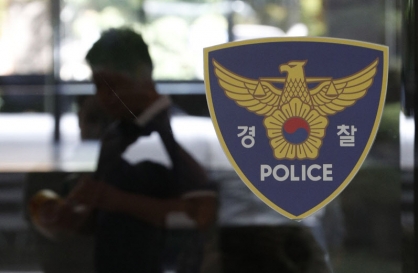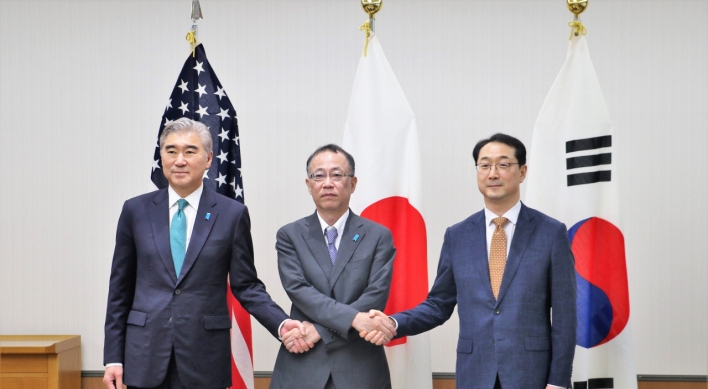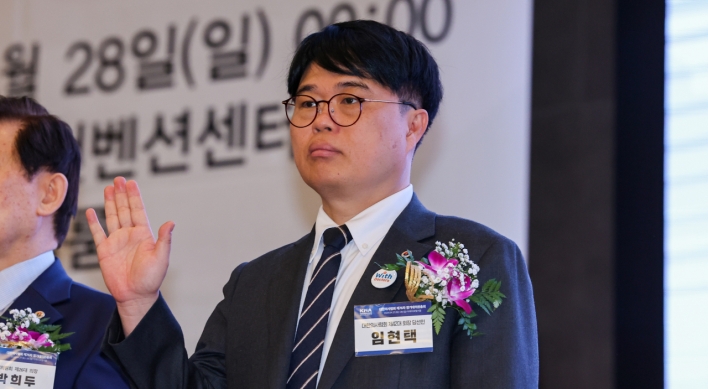The second anniversary of Japan’s monstrous earthquake has me thinking about Elisabeth Kuebler-Ross.
The five stages of grief outlined in her 1969 book, “On Death and Dying,” aptly capture where the collective Japanese psyche has journeyed, and where it hasn’t, in the 24 months since a 9-magnitude quake and giant tsunami forever changed the relationship between nature and the nuclear reactors in the nation’s midst.
I first learned about Kuebler-Ross from my mother, a bereavement counselor and Catholic chaplain in New York. She met with Kuebler-Ross occasionally to compare notes in the 1990s, and says the psychiatrist “brought death out of the closet” to vastly improve the lot of dying patients.
It has occurred to me over the past two years that just as the terminally ill experience five stages of grief, so, too, has Japan gone through denial, anger, bargaining, despair and ultimate acceptance of the ways their tragedy played out.
Denial arrived in the days immediately after March 11, 2011, when waves as high as 133 feet (41 meters) erased entire towns and overwhelmed a nuclear facility 135 miles from Tokyo. As radiation leaked at the Fukushima power plants, authorities assured the nation’s 126 million people that all was well. Tokyo Electric Power Co., whose negligence led to the worst nuclear mess since Chernobyl, hid the severity of the crisis.
Next came anger amid press reports about just how close Japan came to losing Tokyo. We learned more about how then-Prime Minister Naoto Kan stormed into Tepco headquarters, demanded that its staff gain control over the meltdown and literally saved the city from extinction. The plight of hundreds of thousands in the northeast’s Tohoku region enraged the nation as reconstruction unfolded at a glacial pace.
Japanese wanted change. They wanted leaders to be more transparent and to disengage the autopilot that had been guiding the country for 20 years. They wanted someone at Tepco to go to jail and bureaucrats to be fired. Their fury led to the biggest street protests since the 1960s.
Then Japanese realized epochal change was more than they had bargained for. The specter of finding alternatives to nuclear power and rebuilding the northeast had politicians betting they would wake up and find it was all a bad dream. News reports of shantytowns, radioactive schools and squandered rebuilding funds became less frequent. Stories about the resilience of the Japanese people eclipsed curiosity about the role that ingrained conventions of culture and reflexive obedience played in the crisis.
Despair arrived by the first anniversary of the quake, when it became clear that little would change. Far from altering Japan’s trajectory, March 11 demonstrated the depth of the nation’s political and social inertia. It also was a reminder that many of the biggest risks Japanese face ― earthquakes, Chinese pollution, North Korea’s threats ― are beyond their control. Voters were so disillusioned that they even re-elected the Liberal Democratic Party, which they tossed out in disgust in 2009.
Acceptance is now the norm with Prime Minister Shinzo Abe back at the helm after a dismal 2006-2007 stint in the job. Voters seem resigned to let Abe reopen more than 50 nuclear reactors knocked offline two years ago. Call it the period of “shoganai,” or accepting one’s fate and enduring it.
For now, hopes for Japan’s rebirth are sending the Nikkei 225 Stock Average (NKY) soaring and putting the economy back into the global spotlight. Yet optimism about “Abenomics” is mostly an overseas phenomenon. Even though they elected his party, few Japanese seem to view him as the savior they have been waiting decades for.
That’s why the acquiescence stage now at hand is so worrisome. The only way to beat deflation is to convince investors, companies and consumers that prices will be markedly higher five years from now. It’s great that Abe is boosting fiscal stimulus and that the Bank of Japan will soon be under new leadership. But it’s a confidence game. Winning it requires more than pumping money into a comatose economy.
Abenomics may look like it’s a new set of economic policies, but it’s really a marketing strategy. Its early effectiveness is evidenced by the yen’s plunge and how it’s cheering exporters. But Abe, too, is falling prey to his own acceptance process: sticking to the same old debt-fueled growth strategies while promising new and improved results.
Unless Abe deregulates the economy, improves a corporate-governance system that produced the fraud at Olympus Corp. (7733), severs the incestuous ties between government and business that enabled Tepco’s incompetence, and finds safer energy sources before the next giant quake, he will just produce Japan’s next asset bubble.
The risk is that the Japanese are giving Abe a blank check to heal their traumatized nation. Without a bigger and better-targeted plan, it may all end in a new cycle of grief.
By William Pesek
William Pesek is a Bloomberg View columnist. The opinions expressed are his own. ― Ed.
(Bloomberg)
The five stages of grief outlined in her 1969 book, “On Death and Dying,” aptly capture where the collective Japanese psyche has journeyed, and where it hasn’t, in the 24 months since a 9-magnitude quake and giant tsunami forever changed the relationship between nature and the nuclear reactors in the nation’s midst.
I first learned about Kuebler-Ross from my mother, a bereavement counselor and Catholic chaplain in New York. She met with Kuebler-Ross occasionally to compare notes in the 1990s, and says the psychiatrist “brought death out of the closet” to vastly improve the lot of dying patients.
It has occurred to me over the past two years that just as the terminally ill experience five stages of grief, so, too, has Japan gone through denial, anger, bargaining, despair and ultimate acceptance of the ways their tragedy played out.
Denial arrived in the days immediately after March 11, 2011, when waves as high as 133 feet (41 meters) erased entire towns and overwhelmed a nuclear facility 135 miles from Tokyo. As radiation leaked at the Fukushima power plants, authorities assured the nation’s 126 million people that all was well. Tokyo Electric Power Co., whose negligence led to the worst nuclear mess since Chernobyl, hid the severity of the crisis.
Next came anger amid press reports about just how close Japan came to losing Tokyo. We learned more about how then-Prime Minister Naoto Kan stormed into Tepco headquarters, demanded that its staff gain control over the meltdown and literally saved the city from extinction. The plight of hundreds of thousands in the northeast’s Tohoku region enraged the nation as reconstruction unfolded at a glacial pace.
Japanese wanted change. They wanted leaders to be more transparent and to disengage the autopilot that had been guiding the country for 20 years. They wanted someone at Tepco to go to jail and bureaucrats to be fired. Their fury led to the biggest street protests since the 1960s.
Then Japanese realized epochal change was more than they had bargained for. The specter of finding alternatives to nuclear power and rebuilding the northeast had politicians betting they would wake up and find it was all a bad dream. News reports of shantytowns, radioactive schools and squandered rebuilding funds became less frequent. Stories about the resilience of the Japanese people eclipsed curiosity about the role that ingrained conventions of culture and reflexive obedience played in the crisis.
Despair arrived by the first anniversary of the quake, when it became clear that little would change. Far from altering Japan’s trajectory, March 11 demonstrated the depth of the nation’s political and social inertia. It also was a reminder that many of the biggest risks Japanese face ― earthquakes, Chinese pollution, North Korea’s threats ― are beyond their control. Voters were so disillusioned that they even re-elected the Liberal Democratic Party, which they tossed out in disgust in 2009.
Acceptance is now the norm with Prime Minister Shinzo Abe back at the helm after a dismal 2006-2007 stint in the job. Voters seem resigned to let Abe reopen more than 50 nuclear reactors knocked offline two years ago. Call it the period of “shoganai,” or accepting one’s fate and enduring it.
For now, hopes for Japan’s rebirth are sending the Nikkei 225 Stock Average (NKY) soaring and putting the economy back into the global spotlight. Yet optimism about “Abenomics” is mostly an overseas phenomenon. Even though they elected his party, few Japanese seem to view him as the savior they have been waiting decades for.
That’s why the acquiescence stage now at hand is so worrisome. The only way to beat deflation is to convince investors, companies and consumers that prices will be markedly higher five years from now. It’s great that Abe is boosting fiscal stimulus and that the Bank of Japan will soon be under new leadership. But it’s a confidence game. Winning it requires more than pumping money into a comatose economy.
Abenomics may look like it’s a new set of economic policies, but it’s really a marketing strategy. Its early effectiveness is evidenced by the yen’s plunge and how it’s cheering exporters. But Abe, too, is falling prey to his own acceptance process: sticking to the same old debt-fueled growth strategies while promising new and improved results.
Unless Abe deregulates the economy, improves a corporate-governance system that produced the fraud at Olympus Corp. (7733), severs the incestuous ties between government and business that enabled Tepco’s incompetence, and finds safer energy sources before the next giant quake, he will just produce Japan’s next asset bubble.
The risk is that the Japanese are giving Abe a blank check to heal their traumatized nation. Without a bigger and better-targeted plan, it may all end in a new cycle of grief.
By William Pesek
William Pesek is a Bloomberg View columnist. The opinions expressed are his own. ― Ed.
(Bloomberg)
-
Articles by Korea Herald










![[New faces of Assembly] Architect behind ‘audacious initiative’ believes in denuclearized North Korea](http://res.heraldm.com/phpwas/restmb_idxmake.php?idx=644&simg=/content/image/2024/05/01/20240501050627_0.jpg&u=20240502091235)
![[Music in drama] Rekindle a love that slipped through your fingers](http://res.heraldm.com/phpwas/restmb_idxmake.php?idx=644&simg=/content/image/2024/05/01/20240501050484_0.jpg&u=20240501151646)







